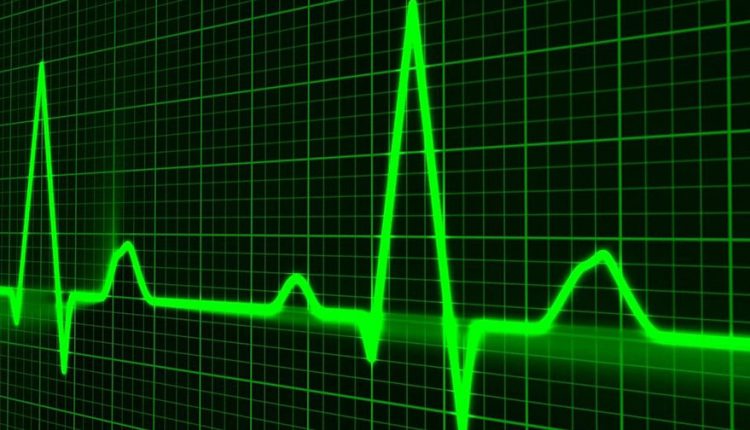Cardiovascular disease (CVD) is the leading cause of death worldwide, with over 17 million per year, according to the World Health Organisation. This represents approximately 31% of global deaths. In addition, CVD represents a great strain on healthcare systems worldwide.
Total costs to the economy reach over £10 billion and $500 billion per year in the UK and USA, respectively. The prevalence and cost of CVD mean that there is an urgent need for solutions to improve the diagnosis, monitoring, and treatment of this devastating illness.
The IDTechEx market research report ‘Cardiovascular Disease 2020-2030: Trends, Technologies & Outlook’ examines emerging technologies for diagnosis, remote monitoring, and treatment.
Regularly monitoring patients during illness is key to induce and facilitate recovery. The protocols for monitoring patients are rapidly evolving. Historically, patients who fall ill are required to travel in order to visit a general practitioner or hospital. This procedure may soon become a thing of the past.
The biggest trends in CVD management currently revolve around remote patient monitoring (RPM), which enables the patients’ health to be examined from a distance. This means that healthcare professionals do not need to examine their patients in person. Instead, consultations can be conducted over video call, and patient readings and information can be accessed through a digital platform. RPM for improving CVD management is not a new initiative by any means, but significant advancement has been made in the field, and now RPM leverages a range of technologies and services to allow for the monitoring of CVD patients both inside and outside of conventional healthcare settings.
RPM involves a number of connected medical devices for use in the home and on the go. These devices provide physicians with the vital signs needed for holistic monitoring of a patient’s condition and can help provide timely intervention to prevent costly acute episodes. Wearables – such as skin patches, accessories, and smart clothing – are particularly relevant as most technological RPM innovations are made in this field.
Their appeal lies in their ability to provide a greater level of convenience and comfort, thereby improving patient experience and outcomes. For instance, most skin patches are wireless, which means that they can continuously monitor the user’s vital signs from anywhere at any time. This is called ambulatory cardiac monitoring. This technology fills a key gap between in-patient cardiac monitoring (accurate, safe, non-ambulatory, expensive) and implantable cardiac monitors (accurate, less safe, ambulatory, expensive).
Wearable devices have some limitations, however. They don’t always fit the criteria required to provide certain aspects of care. Ideally, wearables should be flexible, light in weight, and convenient for the patient. This can sometimes restrict their range of purposes and applications. In addition, long-term use of skin patches can result in skin irritation due to prolonged contact of the electrodes and adhesive with the skin. Moreover, the accuracy of readings generated by wearable devices can be reduced by factors such as moisture (e.g., sweating) or the presence of hairs.
Although wearable products and devices have largely been the center of focus, non-wearable technology exists as an alternative approach to monitoring CVD as it can be advantageous in certain circumstances. For example, it can be more versatile and allow different functions to be combined into one product. Non-wearable products are helping to improve patient outcomes by providing a greater degree of comfort and freedom. Trends in the non-wearable RPM technology space generally revolve around digital and electronic stethoscopes, contact-free patient monitoring, and portable devices for monitoring cardiac health and activity.
It should be noted that while some non-wearable devices are able to provide continuous monitoring, most only provide intermittent readings and are thus not always suitable for patients requiring in-depth evaluations. The use of non-wearable monitoring technology should depend on the patient’s medical needs. The measurements require patient effort to operate the device. In the future, we can expect devices that provide readings with higher frequency or in the background without patient intervention.
CVD RPM has multiple applications beyond simple disease management. These applications include improving patient adherence, clinical trial monitoring, pre/post-op monitoring, and predicting/preventing cardiac events. In addition, the emergence of personalized medicine is facilitated by these technologies as they enable the recording, storage, and sharing of individual patients’ data.
Cardiovascular diseases where RPM has been used include hypertension, heart failure, and arrhythmias. Patients are typically monitored over the progression of their condition but can also be monitored to diagnose unknown heart conditions. The latter is being advanced in the consumer space – the Apple Watch can now utilize its optical sensor to detect atrial fibrillation. As such, in the future, we may see a trend towards consumer healthcare in the CVD space.
IDTechEx predicts that connected technologies promoting access to care and reducing the need for patient intervention will become more widely established. As consumers seek to become more engaged in their healthcare, consumer products such as wearable and portable devices will increasingly form part of people’s treatment plans as users can assess their cardiac health and activity themselves.
Healthcare’s shift to digital is helping to reduce costs, staff workload, and time to treatment by making patient monitoring techniques more efficient. Digital platforms and analytical algorithms linked to connected devices enhance the diagnostic process and provide decision support to physicians. Overall, wearable and non-wearable RPM technologies are helping to reshape disease management procedures by making healthcare delivery more efficient and accessible.

